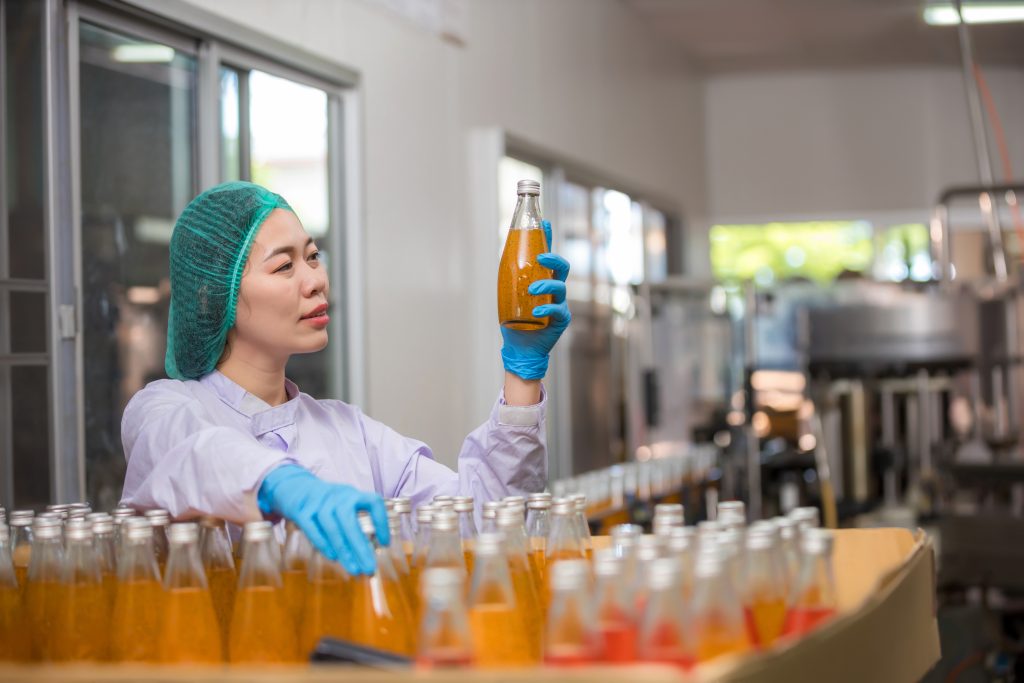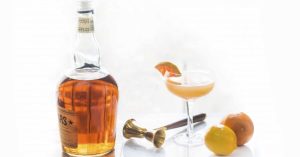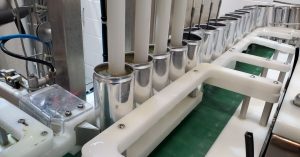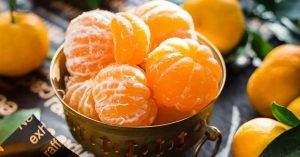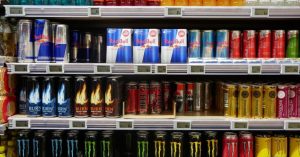Key Highlights
- The non-alcoholic drinks sector is booming, driven by health trends and innovative production methods.
- From non-alcoholic beers to spirits, producers are mastering the art of replicating complex flavors without the alcohol content.
- This blog explores the steps involved, from ingredient selection to alcohol removal techniques, highlighting the precision and artistry involved.
- We’ll also touch upon the challenges faced by producers, such as maintaining consistent taste and overcoming technical hurdles.
- Discover the future trends shaping this rapidly evolving market, including sustainability and technology integration.
Introduction
The non-alcoholic drinks market is witnessing a surge in popularity as more people embrace healthier lifestyles and explore a wider variety of beverage options.
This shift in consumer demand is pushing the beverage industry to innovate, creating sophisticated non-alcoholic beers, spirits, and other drinks that capture the essence of their traditional counterparts. But what exactly goes into the production process of these alcohol-free alternatives?
Let’s explore the secrets behind crafting your favorite NA beverages.
Understanding the Basics of Non-Alcoholic Drink Production

Imagine enjoying the crisp taste of beer or the complex flavors of gin, but without the effect of alcohol. That’s the appeal of non-alcoholic drinks. Crafting these beverages combines traditional techniques with modern technology, creating something truly unique.
The core principle lies in either carefully removing the alcohol from alcoholic beverages or crafting flavorful drinks that were never alcoholic. Each approach involves a meticulous selection of ingredients, precise control over fermentation (or its alternative), and innovative methods to extract and preserve desired flavors and aromas.
Defining Non-Alcoholic Beverages
In the world of beverages, the term “non-alcoholic” carries a specific definition. While it might seem self-explanatory, it’s crucial to distinguish these drinks from their alcoholic counterparts.
Generally, a beverage is classified as “non-alcoholic” if it contains less than 0.5% alcohol by volume (ABV). This low alcohol content is often a result of specialized production methods that either limit the formation of alcohol during the brewing process or remove it after fermentation.
The beverage industry has responded to the increasing demand for low and no-alcohol options by developing sophisticated techniques to craft beverages that closely resemble the taste and experience of traditional alcoholic drinks.
This means we can now find non-alcoholic beers, wines, spirits, and even cocktails that cater to a variety of preferences.
As the lines between traditional alcoholic beverages and non-alcoholic alternatives continue to blur, it’s important for consumers to understand the production processes and ingredients that differentiate these products.
This knowledge empowers individuals to make informed choices aligning with their health goals and lifestyle preferences.
Overview of Production Processes
The production of non-alcoholic drinks can broadly be categorized into two main approaches. The first involves brewing or distilling the beverage traditionally, allowing fermentation to occur and then removing the alcohol.
This is common for non-alcoholic beers, wines, and some spirits. Techniques like vacuum distillation and reverse osmosis are employed to gently extract the alcohol while preserving the desired flavors and aromas.
The second approach focuses on creating flavor-packed beverages without ever introducing alcohol into the equation. This is typically seen in non-alcoholic spirits and cocktails, where botanicals, herbs, spices, and fruits are macerated, infused, or distilled to extract their essence. This concentrated flavor base then forms the foundation for crafting a variety of delightful drinks.
Regardless of the production process employed, meticulous attention to detail is crucial. From selecting high-quality ingredients to controlling factors like temperature and pressure, each step influences the final product’s taste, aroma, and overall quality.
Key Ingredients in Non-Alcoholic Beverages
Just like their alcoholic counterparts, non-alcoholic beverages rely on a careful selection of ingredients to achieve their distinctive flavors and aromas. While the specific ingredients vary depending on the type of drink, the foundation often includes water, grains, fruits, herbs, and spices.
The quality of these ingredients plays a vital role in the final product. For instance, the type of hops used in a non-alcoholic beer will influence its bitterness and aroma, while the variety of botanicals in a non-alcoholic gin will determine its flavor profile.
Selecting Quality Ingredients for Flavor
The art of crafting a delicious non-alcoholic beverage goes beyond simply omitting the alcohol; it’s about meticulously extracting and balancing flavors to create a satisfying and complex profile. Just like a chef skillfully combines spices, producers of non-alcoholic drinks carefully select ingredients known for their flavor compounds.
Hops, for example, are crucial in non-alcoholic beers. Their bitterness, citrusy notes, or floral aromas can drastically change the final product.
By choosing specific hop varieties and adjusting their addition during the brewing process, producers can achieve a wide spectrum of flavors, from light and refreshing to bold and hoppy.
The same principle applies to other non-alcoholic beverages. Whether it’s the zesty citrus of lemongrass in a non-alcoholic spirit or the earthy warmth of cinnamon in a spiced drink, each ingredient contributes to the intricate tapestry of taste that defines the drinking experience.
Role of Water Quality in Beverage Production
While it might seem obvious, the role of water quality in non-alcoholic beverage production cannot be overstated. Water is often the primary ingredient, and its purity and mineral content directly impact the drink’s taste, aroma, and overall quality.
For instance, water with high mineral content can interfere with the brewing process, affecting the yeast’s activity and ultimately altering the beer’s flavor profile. Similarly, impurities in the water can result in undesirable off-flavors or aromas that detract from the drinking experience.
To ensure consistency and quality in their products, producers often invest in advanced filtration systems that remove impurities and adjust the mineral content of their water supply. This meticulous attention to water quality highlights the meticulous approach taken to create non-alcoholic beverages that rival their traditional counterparts.
The Process of Removing Alcohol
One of the key steps in producing many non-alcoholic beverages is the careful removal of alcohol from a traditionally brewed or distilled product. This requires a delicate touch to preserve the desired flavors and aromas that define the drink.
Techniques like vacuum distillation and reverse osmosis are commonly employed in this process. These methods gently extract the alcohol at lower temperatures, preventing the degradation of volatile compounds that contribute to the beverage’s overall character.
Techniques for Alcohol Extraction
When it comes to removing alcohol from beverages, precision and finesse are key. Producers have developed several techniques, each with its own advantages and applications. Here are some of the most common methods:
- Vacuum Distillation: This method takes advantage of the fact that alcohol evaporates at a lower temperature under reduced pressure. By carefully heating the beverage in a vacuum chamber, the alcohol is separated and collected, leaving behind the desired flavors and aromas.
- Reverse Osmosis: Imagine a highly selective filter that allows water molecules to pass through while trapping larger molecules, like alcohol. Reverse osmosis operates on this principle, using a semi-permeable membrane to remove alcohol from the beverage, resulting in a non-alcoholic product.
Choosing the appropriate method of alcohol removal depends on factors such as the type of beverage, desired flavor profile, and production scale. Ultimately, the goal is to extract the alcohol while preserving the integrity of the original flavors and creating a satisfying non-alcoholic drink.
Ensuring Taste Preservation During De-Alcoholization
The dealcoholization process presents a significant challenge: how to remove the alcohol without stripping away the beverage’s soul – the complex flavors and aromas that make it unique? This is where the science of taste preservation comes into play.
Volatile compounds – the tiny molecules responsible for taste and aroma – are highly sensitive to heat and can easily be lost during the alcohol extraction process. To prevent this, producers employ gentle techniques like vacuum distillation, which operates at lower temperatures, minimizing the risk of volatile compound degradation.
Additionally, some producers add back natural flavors that may have been lost during dealcoholization. This meticulous approach ensures that the final non-alcoholic product retains the complexity and depth of its alcoholic counterpart.
Crafting Non-Alcoholic Beers
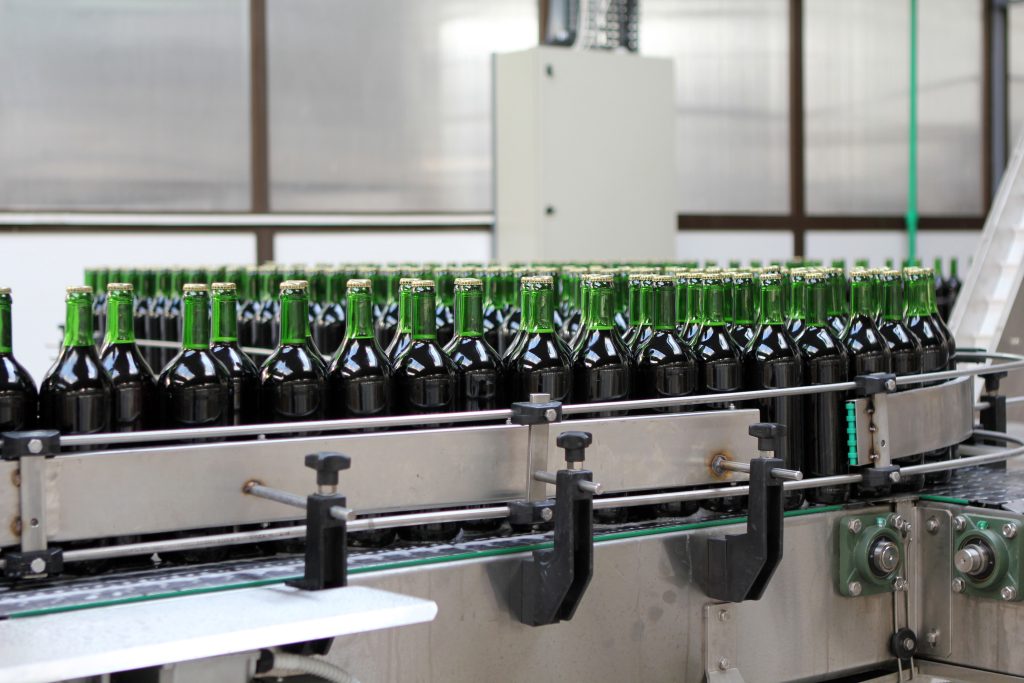
Non-alcoholic beers have come a long way from their early days, and the craft brewing movement has significantly elevated their quality and diversity. Today, brewers are applying their expertise to create alcohol-free versions that capture the essence of traditional beer styles.
This involves carefully selecting grains and hops, modifying fermentation processes to limit alcohol production, and using techniques like vacuum distillation or reverse osmosis to remove any remaining alcohol. The result? Non-alcoholic beers that deliver on taste, aroma, and overall satisfaction.
Special Brewing Techniques for Non-Alcoholic Beer
Brewing non-alcoholic beer requires a unique approach to achieve the desired flavor profile without exceeding the 0.5% ABV limit. One common method involves halting the fermentation process at a lower temperature before significant alcohol levels are produced.
While this limits alcohol formation, it can also result in a sweeter, less complex beer. To compensate, brewers often use specialized yeasts that produce fewer byproducts during fermentation.
Another approach involves using innovative techniques like vacuum distillation. By lowering the boiling point of alcohol, vacuum distillation gently removes the alcohol without significantly altering the delicate flavors and aromas developed during brewing.
Achieving the perfect balance between flavor, aroma, and a satisfying mouthfeel requires a deep understanding of brewing science and innovative techniques to navigate the challenges of alcohol-free brewing.
Challenges in Maintaining Beer Flavor Without Alcohol
One of the biggest challenges in brewing non-alcoholic beer is replicating the complex flavor profile that beer drinkers expect, even with a significantly lower alcohol content. Alcohol acts as a solvent, carrying flavor compounds and contributing to the overall mouthfeel of the beer. Without it, non-alcoholic beers can easily taste flat or watery.
Brewers overcome this hurdle by using a combination of techniques. Carefully selecting malts and grains with rich flavor profiles forms a solid foundation. Experimenting with different hop varieties and adding hops at various stages, a process known as dry-hopping, adds layers of aroma and bitterness.
Ultimately, creating a satisfying non-alcoholic beer requires not only a deep understanding of traditional brewing techniques but also a willingness to innovate and explore new flavor combinations.
Producing Non-Alcoholic Spirits
The world of non-alcoholic spirits is perhaps where innovation in the industry shines brightest. Creating complex, layered flavors reminiscent of gin, rum, or whiskey without the presence of alcohol requires a completely different approach than simply removing it from a traditionally distilled product.
Distillers are pushing boundaries by experimenting with botanicals, herbs, spices, fruits, and unique extraction methods to capture a full spectrum of flavors and aromas. These innovative techniques have led to a surge in high-quality non-alcoholic spirits that rival their alcoholic counterparts in terms of taste and sophistication.
Distillation and Blending Methods
Crafting non-alcoholic spirits that capture the essence of their boozy counterparts involves a multi-faceted process of distillation and blending. Distillers meticulously select botanicals, herbs, and spices known for their unique flavor profiles.
Instead of relying on alcohol as the primary flavor carrier, they utilize alternative methods like steam distillation, vacuum distillation, or maceration to extract the essential oils and aromatic compounds from their carefully chosen ingredients.
The distillation process itself is carefully controlled to preserve the delicate aromas and flavors of the botanicals, often taking place at lower temperatures and under reduced pressure to prevent any degradation. Once the individual botanical distillates are obtained, the real artistry begins.
Skilled blenders step in, combining these distinct flavor components in precise ratios to create the final product. This is where the true craftsmanship lies, as achieving a harmonious balance between different botanical notes is crucial to replicating the complexity and depth of flavor found in traditional spirits.
Creating Complex Flavors in Non-Alcoholic Spirits
Mimicking the complex flavors of traditional spirits in their non-alcoholic counterparts presents a unique challenge. The complexity of a good gin, for instance, comes from the careful balance of juniper berries, coriander seeds, citrus peels, and a variety of other botanicals. Without alcohol to act as a solvent and unifying element, achieving this intricacy in a non-alcoholic gin requires a different approach.
Producers have risen to the challenge, employing techniques like fractional distillation, where botanicals are distilled separately and then blended to achieve specific flavor profiles. By carefully controlling the temperature and pressure during distillation, they capture the aromatic compounds responsible for the unique characteristics of each botanical.
This dedication to precision allows for the creation of non-alcoholic spirits with layers of flavor, from the initial bright citrus notes to the lingering warmth of spices, all without the presence of alcohol.
Innovations in Non-Alcoholic Drink Production
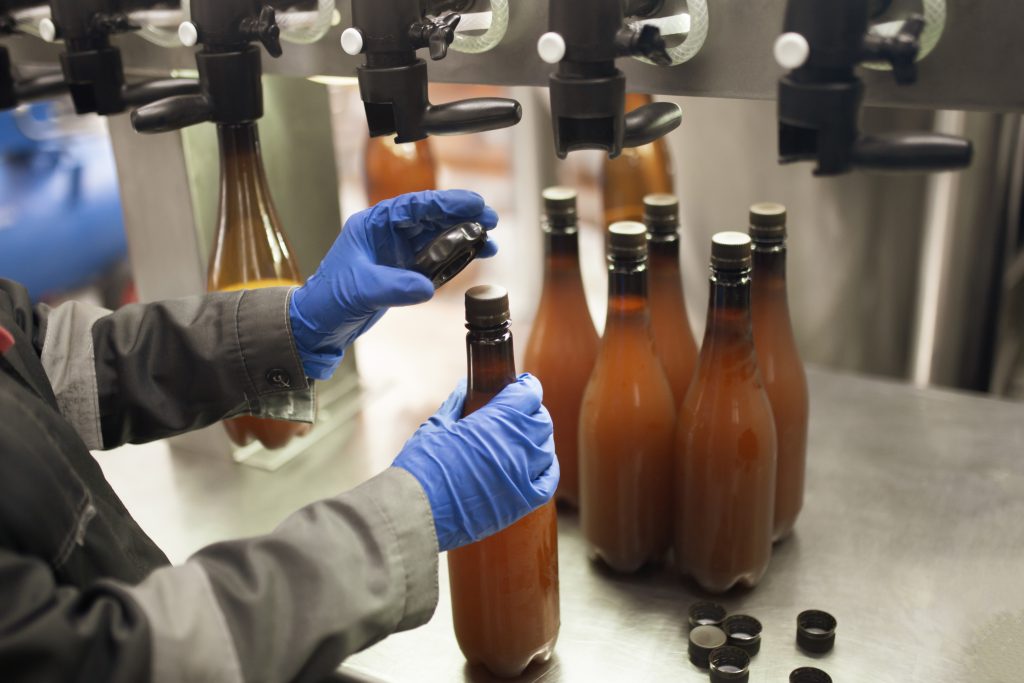
Innovation is the driving force behind the rapidly evolving non-alcoholic drink sector. Producers are constantly exploring new technologies and pushing the boundaries of flavor creation to meet the increasing demand for high-quality, alcohol-free options.
From cutting-edge distillation techniques to the use of AI in recipe development, the future of non-alcoholic beverages is bright. As technology evolves and consumer knowledge expands, we can expect to see even more exciting developments in this exciting sector.
Leveraging Technology for Better Quality
In the pursuit of crafting exceptional non-alcoholic beverages, producers are increasingly turning to technology as a valuable ally. Advanced technology plays a crucial role in several key areas, elevating the quality and consistency of these drinks.
| Technology | Application | Benefit |
| Precision Fermentation | Control of yeast strains and fermentation conditions | Creates consistent flavor profiles and reduces unwanted byproducts |
| Membrane Filtration | Selective removal of alcohol and impurities | Results in cleaner, more refined flavors |
| Sensory Analysis Software | Analysis of taste and aroma profiles | Aids in recipe development and quality control |
These technological advancements not only improve the taste and quality of non-alcoholic beverages but also contribute to the sustainability of the production process. By optimizing resource utilization and minimizing waste, technology is helping shape a more responsible and efficient future for the non-alcoholic drinks industry.
Future Trends and Consumer Demands
The non-alcoholic beverage sector is dynamic and responsive. As consumer demands evolve, producers are innovating to meet these expectations, leading to exciting trends that shape the future of the market. One prevalent trend centers around health and wellness, with consumers seeking low-sugar, low-calorie options without artificial ingredients.
This focus on health aligns with a growing demand for functional beverages that offer additional benefits, such as added vitamins, adaptogens, or botanicals known for their potential health properties. Consumers are increasingly interested in knowing the origin of their drinks and the ethical practices behind their production.
Transparency and sustainability are becoming key differentiators in the market. From sourcing ingredients locally to utilizing eco-friendly packaging, producers who prioritize sustainability are gaining favor among conscious consumers. As awareness surrounding environmental issues grows, the demand for ethically produced, sustainable non-alcoholic beverages is only set to increase.
Cheers!
The production of non-alcoholic drinks involves intricate processes to maintain taste and quality. From selecting premium ingredients to specialized techniques like de-alcoholization, the industry is evolving to cater to changing consumer preferences.
Innovations in distillation methods and flavor complexities are shaping the future of non-alcoholic beverages. As trends shift towards healthier options, understanding these production steps becomes crucial for both producers and consumers.
If you’re thinking of creating a non-alcoholic brand of your own, feel free to get in touch with us. We’d love to help bring your vision to life and guide you through the process from concept to creation.


